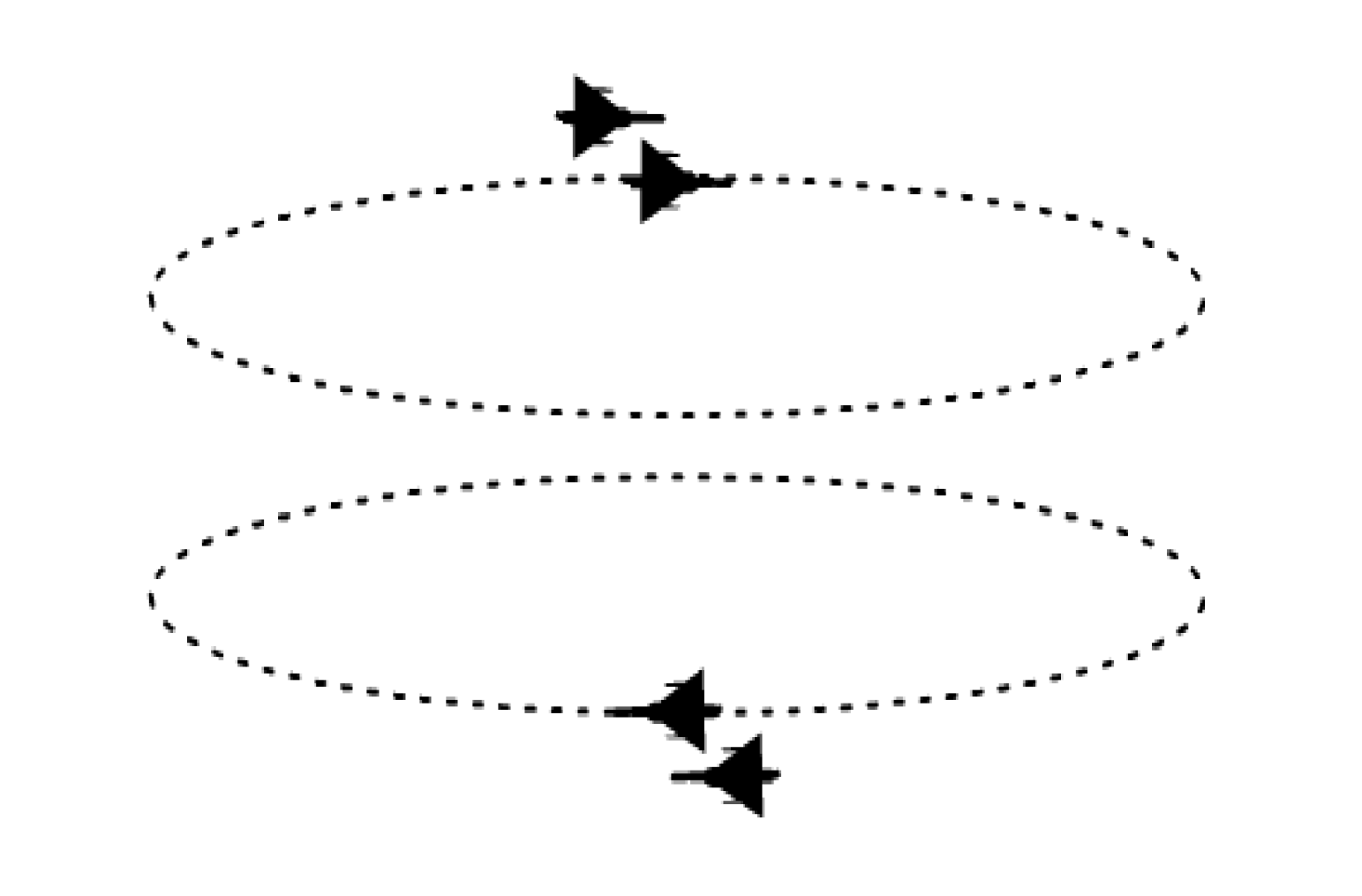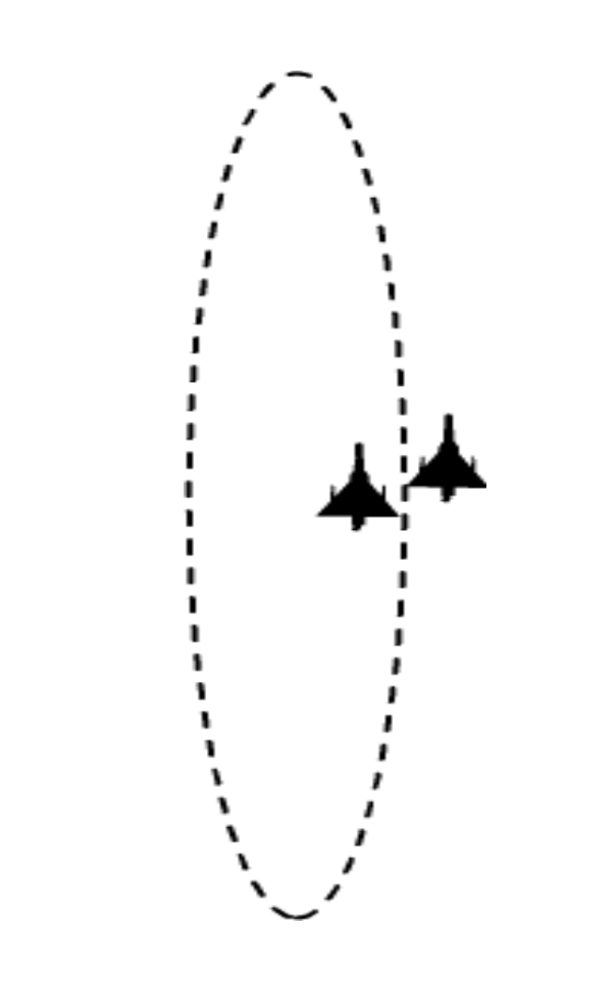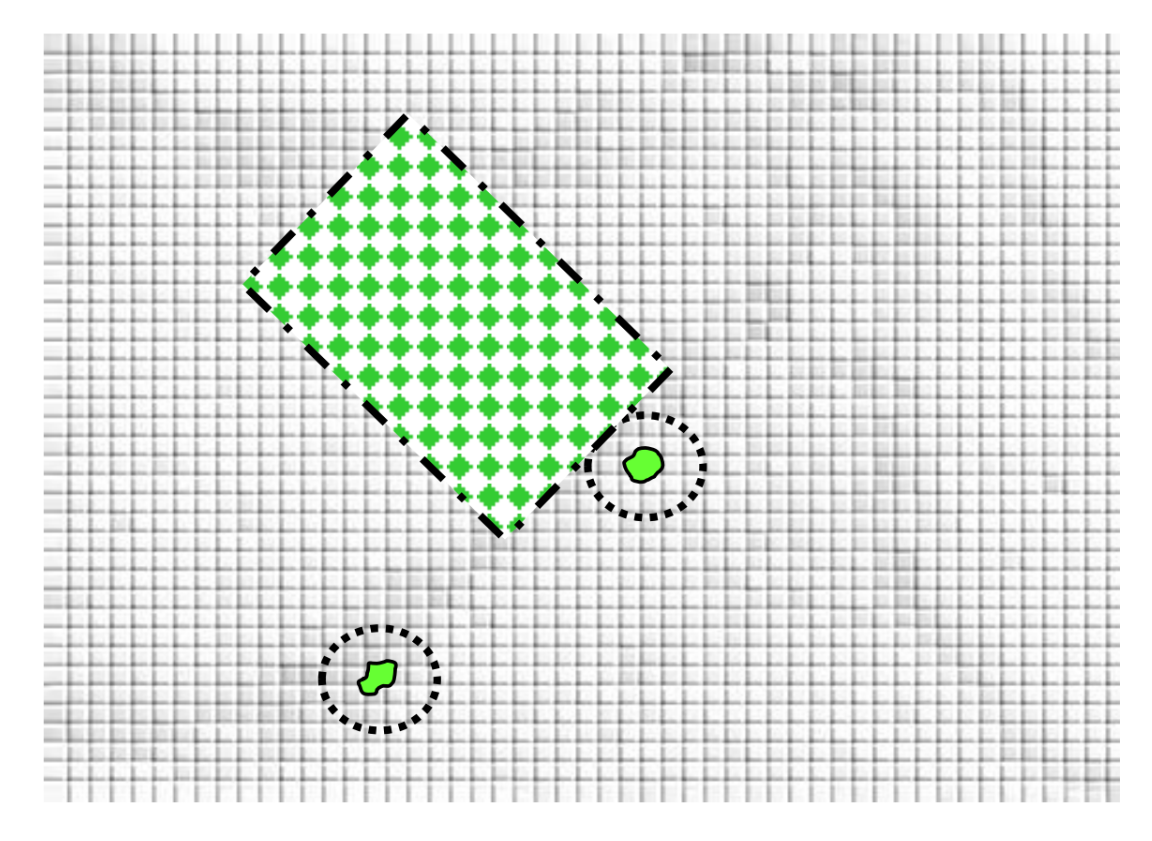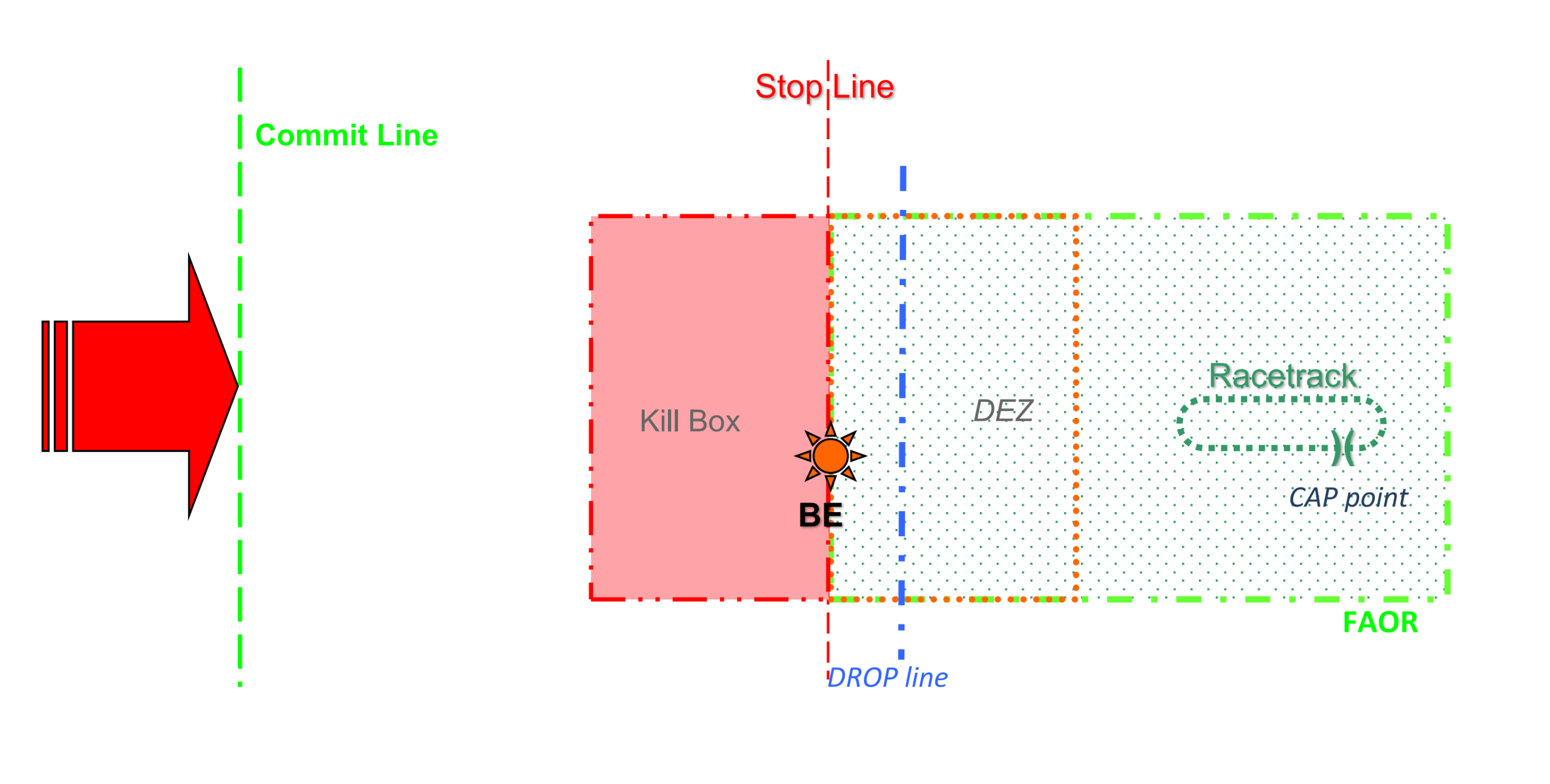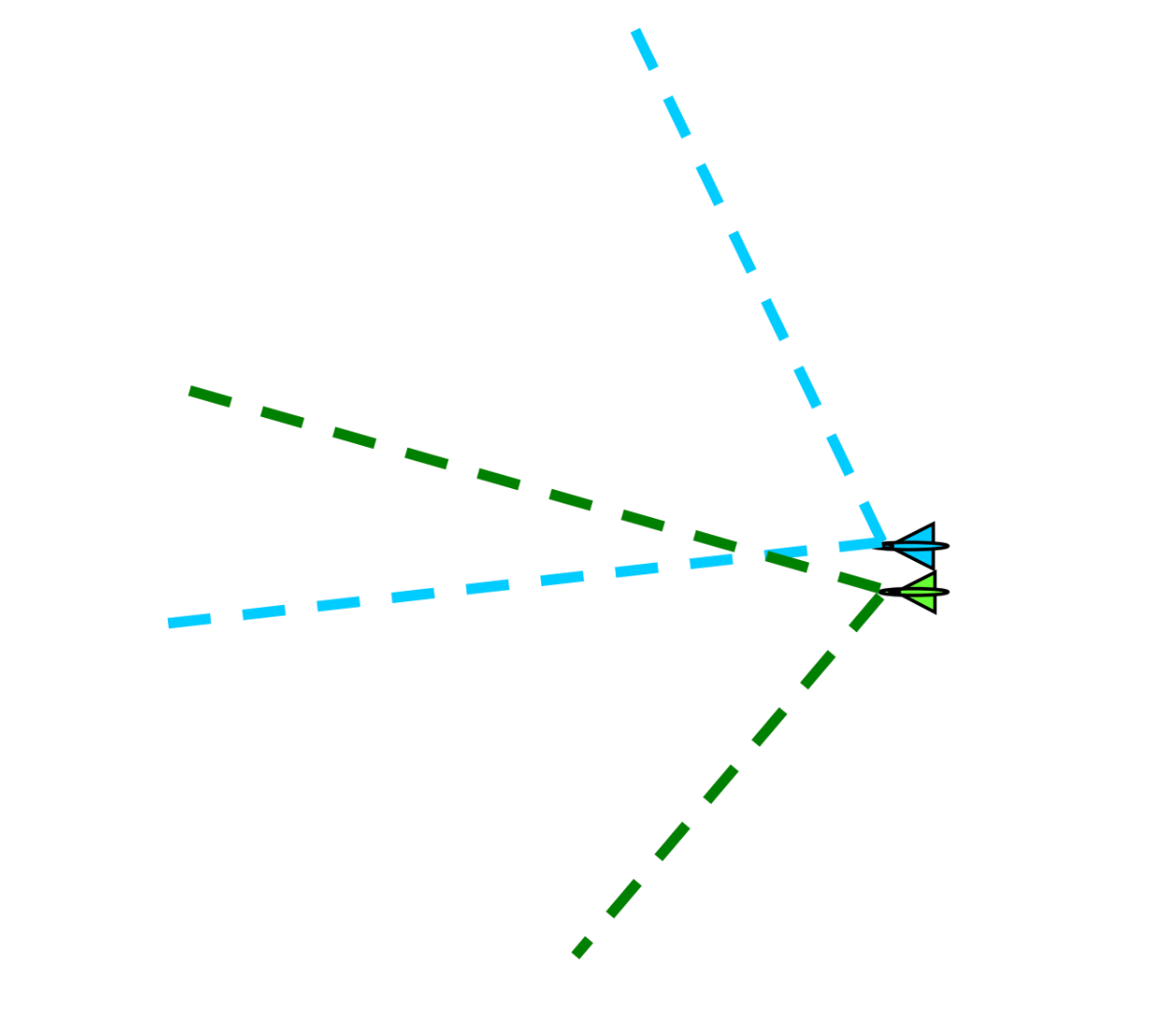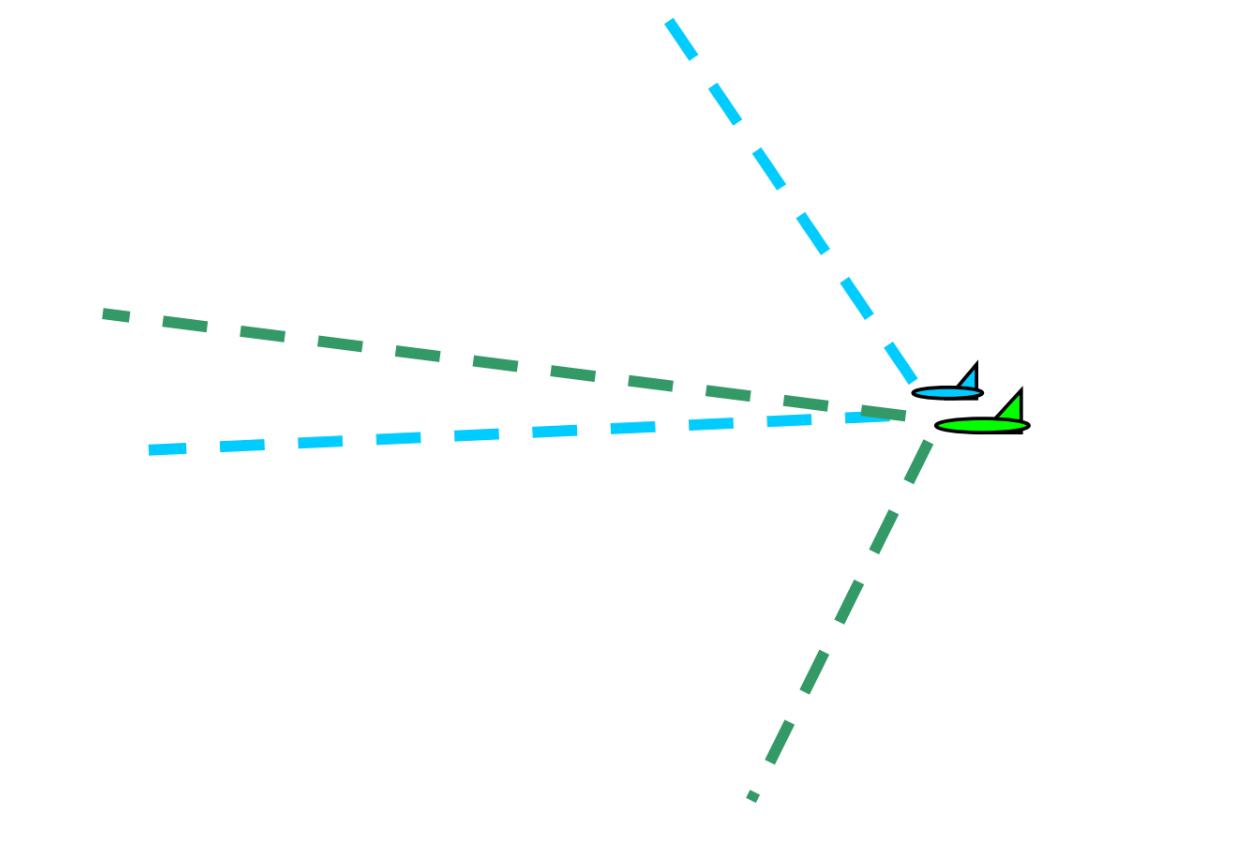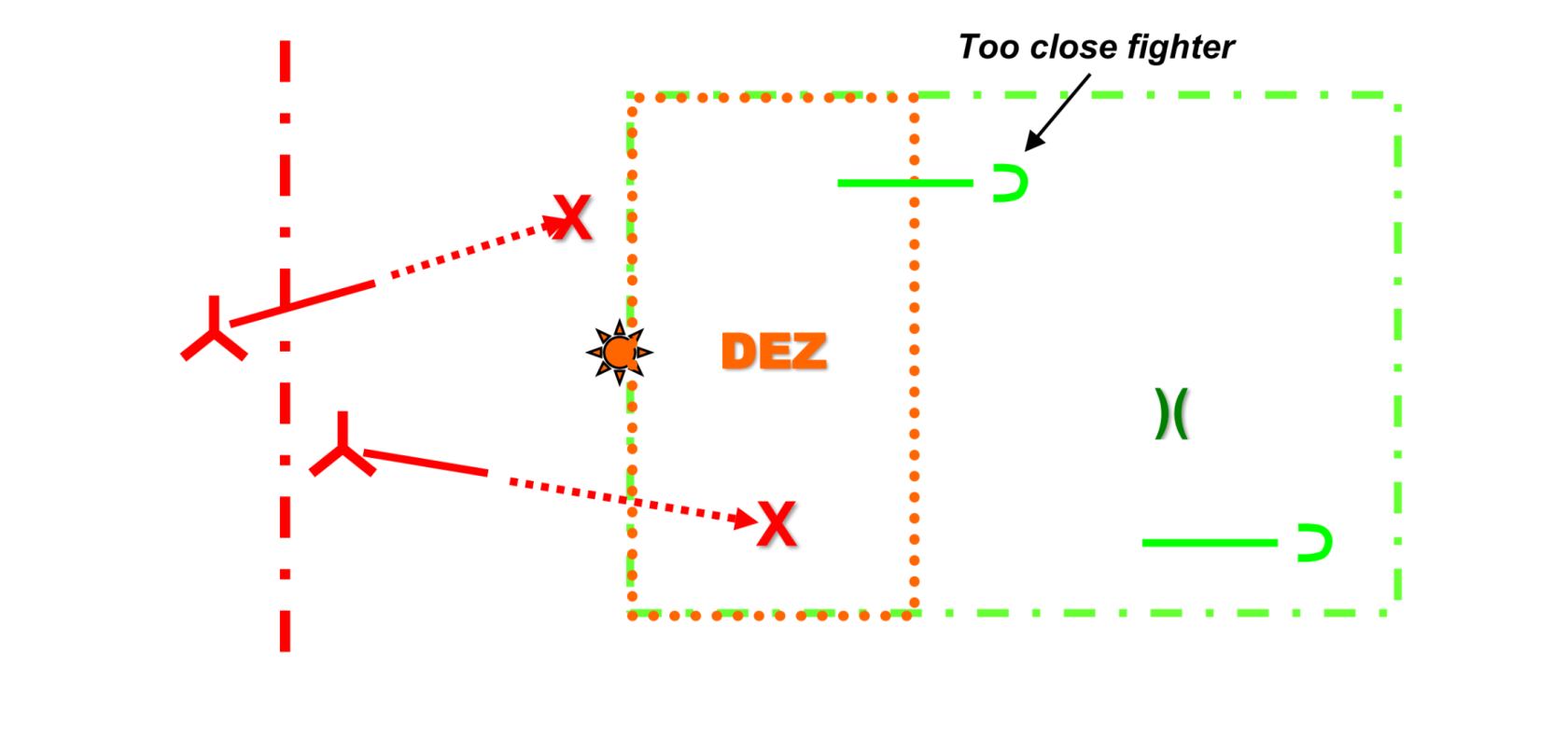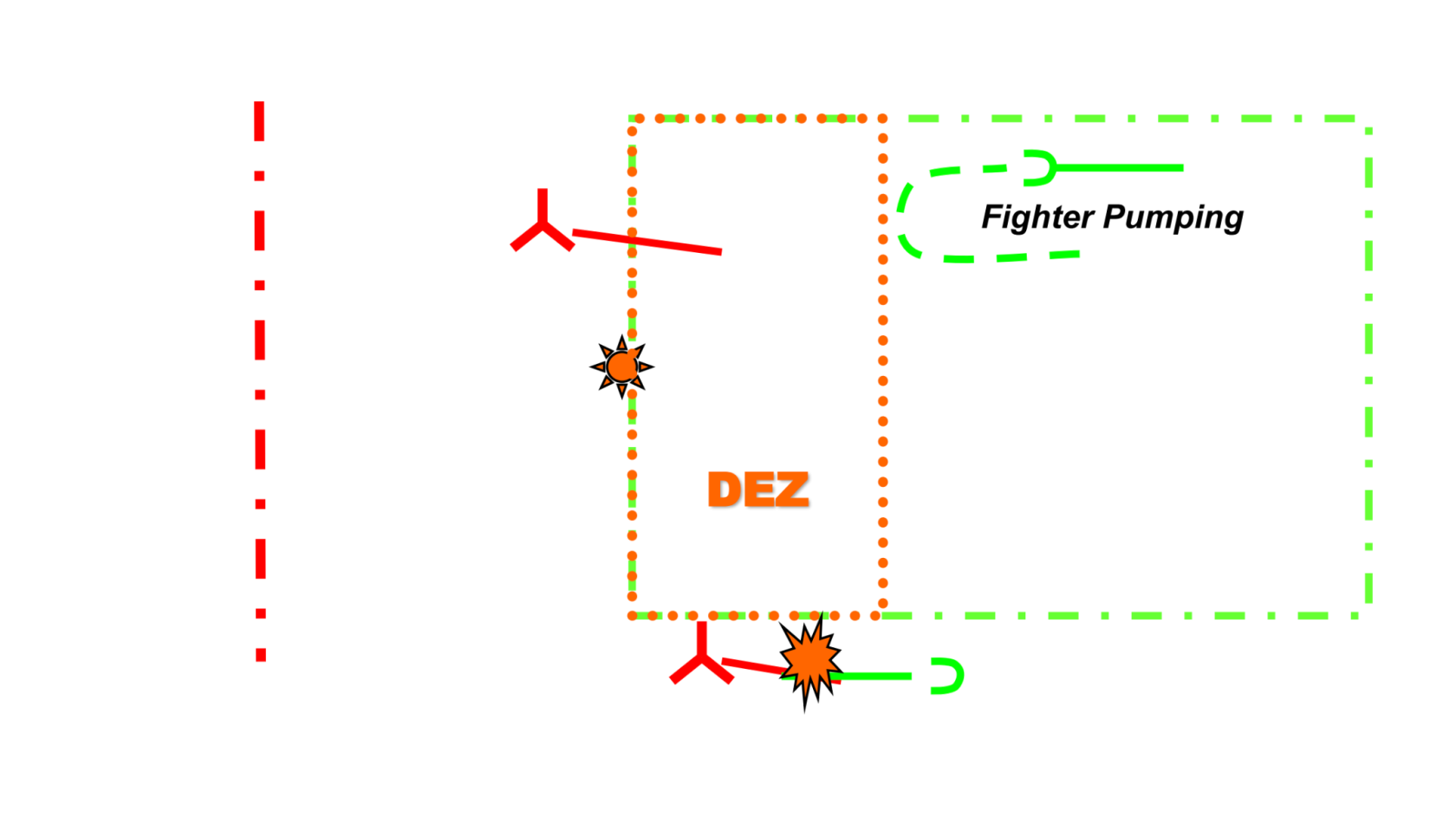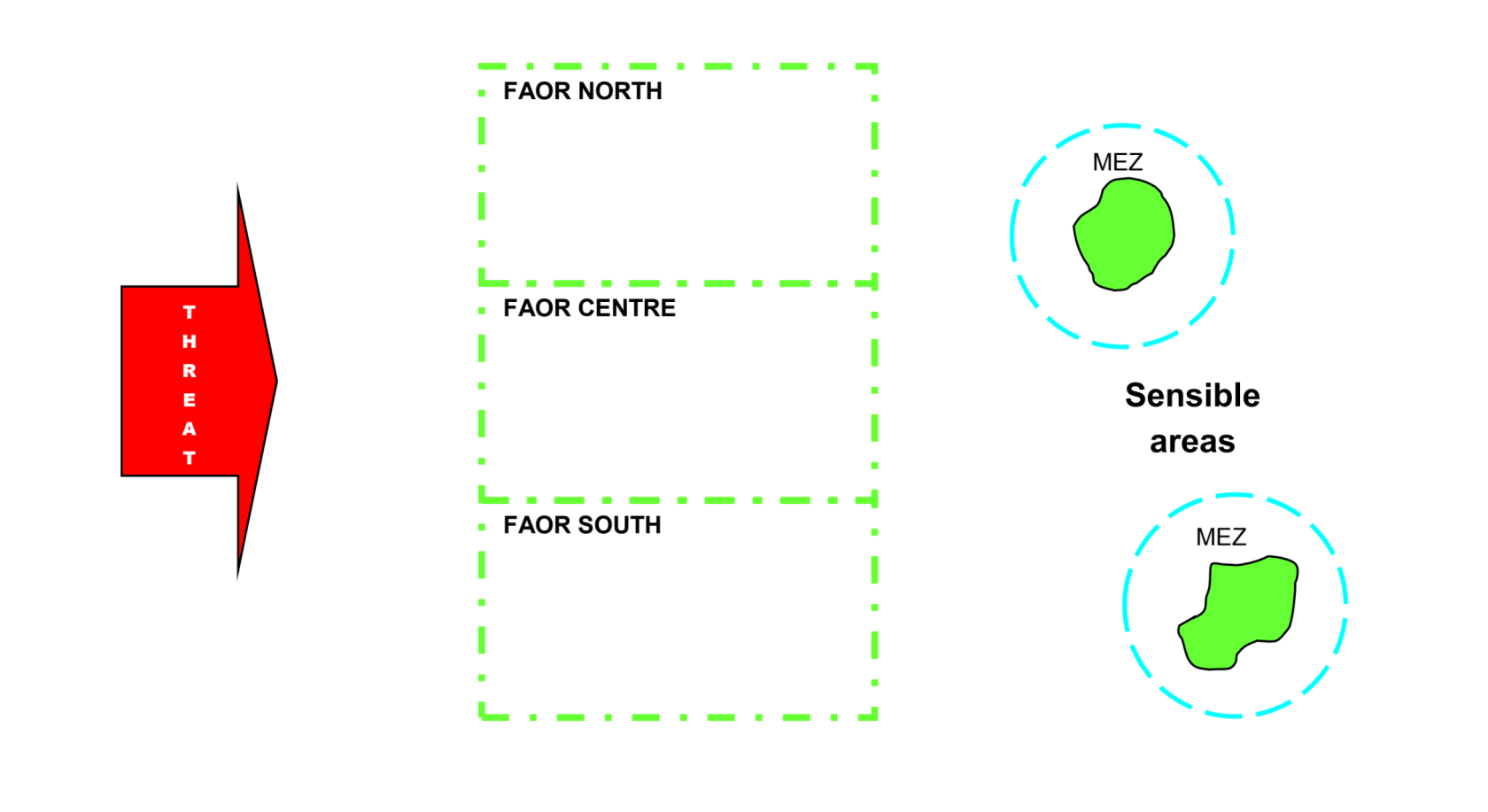4-CAP Techniques
Diese Seite befindet sich derzeit im Aufbau. Einige der angebotenen Inhalte können unvollständig sein oder Fehler enthalten.
Introduction
This module explains the theory and practice of Combat Air Patrols. It describes the different procedures used within an FAOR environment as well. On completion, you will be able to:
- Describe the different CAP patterns.
- Explain the need of FAOR
- Describe the FAOR geographic shapes
- Describe the airspace organisation
- Explain CAP procedures
Combat Air Patrol (CAP)
Combat Air Patrols (CAPs) are airborne patrols positioned as the tactical situation demands. CAPs can be flown for several reasons, as a demonstration of air power, to provide some early warning (if the fighter has a radar) but, more importantly, to respond very quickly to any possible air attack.
The main disadvantage is that even keeping a single CAP position will require several aircraft, to allow for change-overs due to fuel shortages.
Position
The position of a CAP is obviously very important, and depends upon the direction of the threat, but the location of ‘vulnerable points’ (VPs), airbases, prominent geographical features, plus the availability or not of air to air refuelling (AAR), airborne early warning (AEW), and radar control from ships, must also be considered.
CAP Flight patterns
CAP along (towards) the Threat Axis
Aircraft equipped with long range radar (such as EUFI or M2000) can search for the threat on an outbound leg but then are “blind” on the inbound leg. This pattern is used when a reliable ground radar coverage is provided (GCI or AEW).
CAP
Counter-rotating CAP
When reliable ground radar coverage is not provided (GCI or AEW), CAP aircraft must continuously scan the airspace towards the threat origin area. So they fly separately and arrange their path to always keep an aircraft facing the threat (IN or HOT LEG) whilst the other in backing (OUT or COLD LEG).
Counter-rotating CAP
Counter-opposing CAP
If many aircraft are tasked as CAP in a same area for the same mission (4-ship patrol or 2 different pairs) they may fly in separate CAP locations and manage their paths to always keep a pair scanning airspace towards the threat origin area. In this situation, one single CAP commander will be responsible of engagement.
Counter-opposing CAP
Beam CAP
In certain occasions because of the tactical situation, or for non-radar equipped aircraft, CAP may be oriented perpendicular to the area of operations or ingress route of flight.
Organisation
CAP missions may be conducted through different ways, either outside or within specific allocated areas.
When CAP aircraft are only allocated a CAP point, it may become difficult to coordinate the engagement if many targets threaten the area. It is then necessary to define who must engage and which threats (ROEs).
The allocation of a defined area to a CAP fighter eases the engagement. Such an area is named Fighter Area Of Responsibility (FAOR).
Types of control:
CAP outside FAOR --> LOOSE or CLOSE, POSITIVE or ADVISORY
CAP within FAOR --> ONLY LOOSE ADVISORY
FAOR
The Fighter Area Of Responsibility (FAOR) is an airspace of defined dimensions where Air Defense Fighters have the primary responsibility for:
- Patrolling
- Intercepting
- Engaging
Any unidentified aircraft detected and flying inside an FAOR must be intercepted, identified, classified and engaged if necessary.
Advantages of FAOR
When airspace becomes complicated because of multiple missions taking place in it, it is necessary to organise it in accordance with the
requirements of each specific mission. When an area is designed to protect heavy air activity, FAOR is designed to make the engagement easier.
Procedures
CAP point, bull’s eye, frequencies, and sometimes IFF codes for mode 3, are assigned to each FAOR. So a CAP pilot will immediately and
automatically be aware of all the data associated with the area he is going to fly in.
Engagement
Through the picture provided by Fighter Controllers, pilots have a good situational awareness within their allocated area. They can immediately react when pop-up traffic appears, detected or not by the ground radar site.
Also, when the controller is completely busy, or radio contact is lost (frequencies jammed or failure), pilots know that they are responsible for air superiority within their allocated FAOR.
Planning
When many CAPs are planned for a long period, it is much easier to associate the CAP, the station time with the FAOR.
Location
FAOR is designed to position defensive fighter aircraft as far as possible from the vulnerable area, towards the threat origin. It can be located beyond the Missile Engagement Zones, or on the other side, depending on the priorities of engagement defined by the Force Commander.
FAOR can be isolated if the probability if threat is low. If the probability of threat is higher, then FAORs can be joined to border each other in order to act as “Barrier CAP”.
Shape
There is no specific requirement for the shape of an FAOR. It must allow aircraft to maneuver within it. The needs and the tactical situation define the best use of the airspace. Usually a rectangle is chosen because it offers 2 side longer than the others, allowing longer radar scanning by the fighters.
The limits of the FAOR may be either lines joining geographic points or lines of Latitude and Longitude.
Size requirements
The FAOR size should allow fighter aircraft to maneuver as freely as possible to perform their task. Also the weapon system and the missiles capabilities should be integrated when the FAOR is designed. The Long-range capability of MICA and AMRAAM requires sizes not to be shorter than 50-60nm long and 40nm wide.
Orientation
The shortest side should always face the threat.
Airspace Organisation
CAP Point
The CAP point, also called “Anchor point” is a geographic reference point defined by the ACO and associated with the FAOR. It is the racetrack origin. If the tactical situation requires, both pilots and controllers can move the CAP point location. If so, each one must ensure that the new position is known by all other users.
A CAP point may also be used independently of an FAOR. In this case, there is no lateral limits for pilots responsibilities and engagement should be coordinated between pilots and controllers.
Racetrack
The racetrack is a defined pattern to be used by pilots when patrolling. Its orientation depends upon the FAOR orientation itself.
It is composed of 2 legs:
- one leg towards the threat sector (Hot leg)
- and the other one when flying the opposite direction (Cold leg).
It can be flown “clockwise” or “Counter clockwise”; this must be defined by the CAP leader. Fighter aircraft can fly together or separately. If a GCI or AEW controller is available, with no restriction in the radar coverage, they will fly together. They can scan in the threat direction only on the hot leg, and their picture will rely on the controller when flying the cold leg. The role of the controller is then to keep the pilot’s situational awareness current.
If detection is poor or if no controller is available, or if the hostile picture requires, they will adopt the Counter Rotating or Counter Opposing CAP profiles. They will split in 2 single ships and fly separately in order to always keep 1 aircraft on the hot leg, while the other one is cold.
The leader must co-ordinate their paths. Same profile will apply when 2 pairs fly anchored at the same CAP point.
Bull’s Eye (BE)
The Bull’s Eye is a reference point, defined in the ACO, and used to transmit the picture. When it is associated with an FAOR, the BE is always located on the edge towards the threat. There is only one BE associated with an FAOR, but many others can be used outside it.
When using a different BE, both pilots and controllers must state the BE name used as a reference for this transmission.
Desired Engagement Zone (DEZ)
The Desired Engagement Zone is an area within the FAOR where engagement is expected. Located on the threat side of the FAOR, it is used to ensure that the pilots will neither engage too early nor too late.
All interception calculations are based on this location.
Kill Box
The Kill Box is the extension of the DEZ, located outside the FAOR. It is strictly forbidden for friendly aircraft to fly in a Kill Box. Therefore every contact gained in this area will be immediately engaged and destroyed.
Commit Line
The Commit Line is a line located far away from the Kill Box, towards the threat, and at the same distance from the FAOR Bull’s Eye as the fighter CAP position.
The commit decision must be taken before enemy aircraft cross it.
Stop Line
To give the Kill Box its complete credibility, as mentioned above, it must be mandatory that none of the friendly aircraft will fly in it. So a Stop Line is defined on the FAOR boundary, between the DEZ and the Kill Box.
Drop Line
Located within the DEZ at about 10/15NM (defined by the CAP leader) from the Stop line, this line is the limit where fighters stop monitoring a specified target and resume search responsibilities. Fighters then reduce the risk of crossing the stop line and entering the Kill box.
Techniques
Alfa Check
When taking over a CAP mission, the controller must check the Bull’s Eye position with the pilot. This will ensure that both are using the same reference point for the picture broadcast. This step is called “Alfa Check” and must be performed as soon as possible before transmitting any picture. Requested by either the pilot or the controller, the message contains the bearing and range to the Bull’s Eye from the fighter’s current position.
Radar work
To gain maximum efficiency, both aircraft of the same pair share the airspace scanning. They adjust radar parameters to give maximum horizontal coverage, the left hand side pilot optimizing the left side of flight path, and the right hand one, the right side.
They also adjust radar parameters to give maximum vertical coverage, the left hand side pilot optimizing the lookdown from altitude path, and the right hand one, the lookup.
Chronology
Pilots expect an initial picture transmission as soon as they are in contact with the controller and after authentication and “Alfa check” are completed.
When a threat occurs, then:
- The controller broadcasts the picture Fighters prepare to engage, analyse the raid composition and decide who will commit to which bandit. This is “sorting”
- When Bandits cross the “Commit Line”, sorting must be completed and pilots calculate the point of interception, while still being on the racetrack. “There is no need to rush into the engagement...”
- When the Interception point reaches the DEZ, only then should the pilots engage.
- To avoid fratricide shots, it is essential that the fighters do not cross the “stop line”.
- Then if pilots are too close to the DEZ, they will fly a U-Turn (Pump maneuver) to reengage as soon as the range permits.
- While Pumping, pilots expect close monitoring of the air situation behind them.
- When the engagement is completed and the enemy killed, the controller should collect different information:
- Engagement results (number of kills and weapons used)
- Remaining armament
- Remaining fuel or Playtime (time on station till Bingo)
Multiple FAOR
CAP Mission Commander (CAP MC)
If two or more FAOR are adjacent, a CAP Mission Commander (CAP MC) will be designated by the “AOC Plans Cell” through the ATO. He will be in charge of coordinating the aircraft availability, the reliefs and all engagements. He will expect the controller to assist him in managing the FAORs.
Hardwall
The “Hardwall” procedure exists to prevent the crossing of adjacent FAORs and associated “Kill Boxes” to:
- Ensure the safety between the different players.
- Define and clarify the engagement between them.
There must be also a good coordination between the different controllers.
Engagement
To face a heavy enemy raid (i.e Gorilla), the CAP MC could decide to talk to all the CAP assets on a single frequency to ease sorting through direct contact. Then the controllers must push their assets onto the CAP MC frequency. Also when the incoming threat is identified as heavy, far away from the FAORs, the FA can request the CAP MC controller to ask the pilots to push to the CAPMC frequency.



